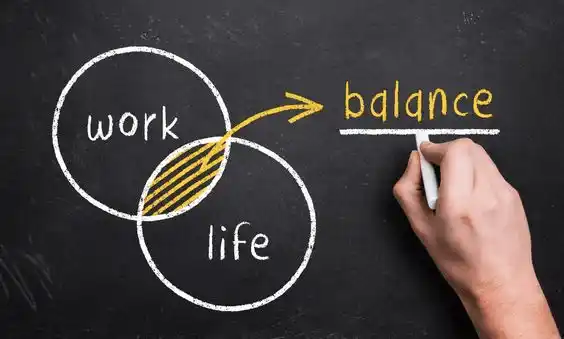Zeeshan Hayat’s Insights for Maintaining Work-Life Balance

For years, the concept of work-life balance has dominated the conversation around how we should structure our lives. Work-life balance is more than just splitting time between your job and personal activities—it’s about creating a rhythm that allows you to thrive in both. However, the reality of achieving this balance is far more complex than it appears. While many people hope to achieve this balance, it often feels out of reach, resulting in frustration and dissatisfaction.
The root of the issue lies in the notion of “balance” itself. Life is inherently dynamic; it doesn’t sit still long enough to be perfectly balanced. The pursuit of this ideal often leads to frustration, anxiety, and a sense of inadequacy, as we try to achieve something that may be fundamentally unattainable.
Why Work-Life Balance is Still an Elusive Goal
We’ve all heard the standard solutions: set boundaries, don’t bring work home, carve out time for yourself. Yet, these approaches often fail. Let’s be honest, who among us hasn’t found ourselves checking emails or Slack messages over dinner, promising ourselves we won’t respond until the next day? The problem is that even if we don’t reply, our minds are still consumed with the guilt of what we should be doing.
Alternatively, we’re told to prioritize self-care and take vacations. But let’s face it — many of the senior leaders giving this advice didn’t get to where they are by following it. These leaders often work relentlessly, setting an unspoken standard that implies working less may hinder career advancement. And so, the cycle of burnout continues.
The Secret Lies in Attention, Not Balance
Maybe the problem isn’t about finding balance but learning to be present. What if, instead of focusing on how much time we spend on work or life, we concentrated on the quality of that time? Being fully engaged in whatever we’re doing, whether it’s a project at work or spending time with loved ones, can create a sense of harmony that rigid boundaries can’t.
Take a look at people who thrive both at work and at home. They aren’t necessarily working less; they’re just more intentional with their time. They’ve mastered the ability to be present where they are, giving their full attention to each moment. This presence isn’t about clocking in or out — it’s about being fully engaged in one thing at a time.
Building Attention Muscles
Achieving work-life harmony requires the discipline to be fully present. If you work after hours, focus entirely on the task and then return to your personal life. When with family or friends, engage fully; checking emails or urgent messages during that time doesn’t foster true connection. Turn off notifications to avoid distractions; the constant pings can lead to reactive behavior, similar to teenage habits, rather than the mindful presence expected of an adult.
It’s not easy, especially when work demands often spill into personal time. But if you must engage after hours, make it a purposeful decision — tackle the task with full attention, then consciously switch back to personal time without guilt or lingering stress.
Long Hours Aren’t the Enemy — Distraction Is
Contrary to popular belief, the issue isn’t necessarily the number of hours we work. Historically, people worked longer and harder than we do now. The real challenge is the constant bombardment of distractions that prevent us from fully engaging in any aspect of our lives. We’ve lost the art of being present.
The pursuit of work-life balance often leads to more anxiety, as we chase an unrealistic ideal. Instead, we can focus on achieving presence — being fully involved in the moments that truly matter.
So maybe it’s time to rethink the whole idea of balance. Instead of trying to juggle everything equally, focus on being present. Work-life harmony isn’t about dividing your time — it’s about owning your moments, whether at work or at home. And that shift in mindset can lead to a far more fulfilling life, both professionally and personally.
What’s one change you can make to improve your focus and presence in daily tasks?
Discover more lifestyle tips and business advice on my website, Zeeshan Hayat.
